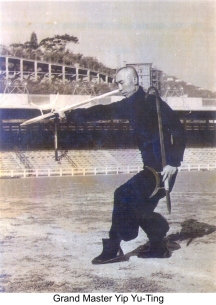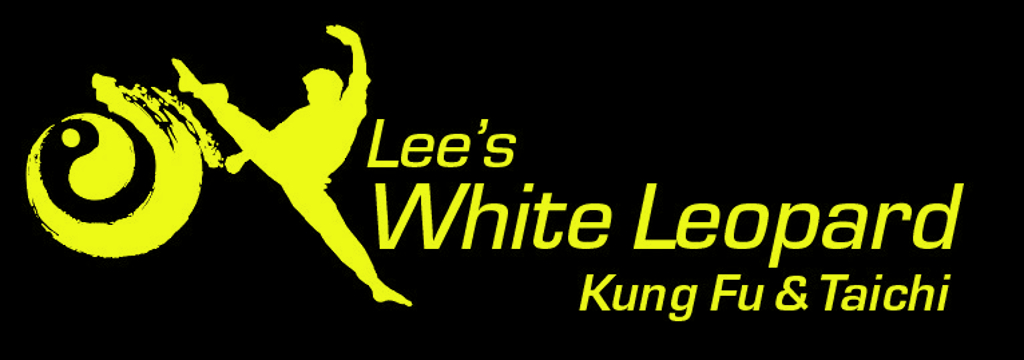The Legend Continues…of a Great Master
Grand Master C. H. Marr
The mastery of the Northern Shaolin Kung Fu system known as My Jhong is the guarded legacy of the Foh’s Clan. It is therefore known as Foh’s Fist, which, by the time it was mastered by Foh Yuan-chia (founder of the Chin Woo School) of the early 20th century, had been taught for seven generations. Like the Northern Kung Fu styles of Tai Chi, Erh Long, Fan Tze, Pa Kua, Cha Tsuan and Tan Tui, it belongs to the ‘long-fist’ school of martial arts. The viability of the My Jhong School lies in the alacrity and shrewd precision of its movements, which, precipitous while in attack, forces its opponents to focus on defending themselves, rather than attacking.
The My Jhong Law Horn Style is a branch of the My Jhong School, and is characterized by the peculiar versatility of the hand movements and foot work involved. With markedly fleeting movements and nimble jumps, a typical My Jhong Law Horn form metamorphoses from a side-blow to a flying kick in mid-air, or to a sweeping stroke beneath the legs. In the face of such unpredictable moves, now upwards, now downwards, the opponent is often left at his wits’ end. To top it all, every maneuver is so minutely devised that it transcends prediction. With the hands, eyes, body and feet in one coordinated motion of agility and swiftness, the practitioner can deal far-reaching blows. Designed to strike from a wide range, the form has a flexible and extensive stretch. Beneath the ostensibly fragile stance lurks a tremendous force from which the very potency and strength characteristic of this style generates. This is what truly makes My Jhong Law Horn a renowned style of Kung Fu of Northern China.
The My Jhong Law Horn Style dates back to time immemorial. Its origin has been traced to Chuong Hsien and Nan Pei of the Hopei Province. In those days teachers and students alike treasured and confined the art to themselves. Consequently it became a family inheritance and was rarely taught to outsiders. There were numerous followers of the art in Northern China, but is was Grand Master Yip Yu-Ting who first brought and revealed this art to the people in Southern China.
 Sifu Yip Yu-Ting, alias Yeh Chuk-chuan, came from Chuong Hsien of Hopei Province in Northern China, was born in the times of Emperor Kwang Shi of the Ching Dynasty. He started learning My Jhong Law Horn, the family legacy, from his father at the age of seven. By the time he was fourteen, he had achieved great stability in stature and immense versatility in body and limbs. In furtherance of his skills, he practiced My Jhong Law Horn under the pupillage of a great Master, Yeh Sheh-tsun of Sifu Yip’s own family. Endowed with high intelligence and evincing sheer dedication which made practice of the art an all weather, night and day preoccupation, he won the favor of his Sifu. Intensely gratified that he had found a successor, the old man unreservedly taught Sifu Yip all his skills within a few years.
Sifu Yip Yu-Ting, alias Yeh Chuk-chuan, came from Chuong Hsien of Hopei Province in Northern China, was born in the times of Emperor Kwang Shi of the Ching Dynasty. He started learning My Jhong Law Horn, the family legacy, from his father at the age of seven. By the time he was fourteen, he had achieved great stability in stature and immense versatility in body and limbs. In furtherance of his skills, he practiced My Jhong Law Horn under the pupillage of a great Master, Yeh Sheh-tsun of Sifu Yip’s own family. Endowed with high intelligence and evincing sheer dedication which made practice of the art an all weather, night and day preoccupation, he won the favor of his Sifu. Intensely gratified that he had found a successor, the old man unreservedly taught Sifu Yip all his skills within a few years.
When Sifu Yip reached the age of twenty, he started to teach martial arts in his home town of Chuong Hsien and the neighboring Nan Pei County. Upon the instruction of his Sifu, he became the Chief of Guards in the All Victory Security Service of the East Gate at the age of twenty-four. It was a time of segmentations of the country by the warlords after the collapse of the Ching Dynasty. Civil wars were rife. Across the Northeastern parts and within and beyond the Great Wall, bandits spread like plague. They robbed all over the place, plundering and wreaking havoc with unsurpassed vehemence.
Viewing Sifu Yip as a fledgling, they were filled with spite, and tried to waylay his guarded consignment. As they soon found out, the debut of Master Yip on horseback was a stunning shock. His mastery of My Jhong Law Horn sent them fleeing under the grass. It took them little time to learn that they should scurry away at the mere sight of the ‘All Victory’ banner, less still to fall to pieces at the mere mention of Sifu Yip’s name. After the proprietor of the All Victory Security Service died, and as highway robberies dwindled away, Sifu Yip grew tired of his job. It so happened that General Huang Wei-hsin of Peking was reorganizing his troops to fight the Northern warlord at the time, and was determined to make martial arts part of the army training. He heard of Sifu Yip and secured his services as the Chief Martial Arts Instructor of the First Company.
On his promotion to Commander of the Peking Army, General Huang appointed Sifu Yip as the army instructor in martial arts. Sifu Yip was given three promotions within a span of three years, after which he stayed on in his job for another seven years. General Huang subsequently quit, so he could work under General Chang Hsieh-liang, son of General Chang Jor-Lin. Having held his job for another three years, Sifu Yip resigned on the pretext of family commitments. After a while, however, he was again courted by the military, this time by General Chang Chung-chuang of the Shantung Provincial Army, who appointed him as army instructor. Having served there for two years, he resigned upon General Chang’s death, and migrated southwards to Shanghai on his own. He became allied to the Central Chin Woo Athletic Association of Shaolin Class in the South China Athletic Association.
At the outbreak of the Second World War, Sifu Yip moved on to Guongzhou Wan, located 242 nautical miles to the Southwest of Hong Kong, where he taught at the Cosmopolitan Lion Dance Institute and the Sze Yeng New Martial Arts Center. After the war, he was invited by members of the South China Association to return to his post in Hong Kong. Moved by their earnestness he made a comeback. From then on he remained Head Instructor of Shaolin Class at the South China Athletic Association for nearly thirty years, within which period he turned out a stream of students. His end, alas, came all too soon at the age of seventy. He died after a brief illness in December, 1962, surrounded by his devoted and heartbroken students at his bedside. He was buried in the Tsuen Wan Chinese Permanent Cemetery. Buried with him was the life he had had as a renowned Master of My Jhong Law Horn, but never our profound grief at the loss of this great master!
Sifu Yip’s death did not mark his end to posterity. His devout disciples include Chi-hung Marr, Johnny Kwong Ming Lee, and Raymond Wong, to name a few, who, together with their students, have since proudly shouldered the responsibility of propagating the art of My Jhong Law Horn at home and abroad. To remind themselves of such a meaningful task, they have on display in the training halls of their Kung Fu schools two scrolls flanking the Grand Master’s portrait, a couplet which reads:
The five continents are simmering;
Tigers and monsters are waiting
To be conquered by Law Horn.
May there be no diversions from the main course;
To spread the art and defend the cause
Are the duties of the My Jhong Masters.
